The Rio Grande GP40s
2441, 2442, 2443
In its formative years, the Arvada Western turned to leased motive power from Sur Rail, Helm Leasing, and CITI Rail to quickly establish operations along the Golden Subdivision. These early arrangements were instrumental in laying the groundwork for what was to come.
A turning point arrived with the acquisition of three GP40 locomotives, once part of the storied Denver & Rio Grande Western roster. Their return to Colorado rail was more than a practical move, it was a homecoming. After undergoing Positive Train Control (PTC) upgrades and being renumbered into the Arvada Western system, the trio was promptly placed into service. Their arrival marked a symbolic link between the region’s rich railroad heritage and the aspirations of a rising carrier.


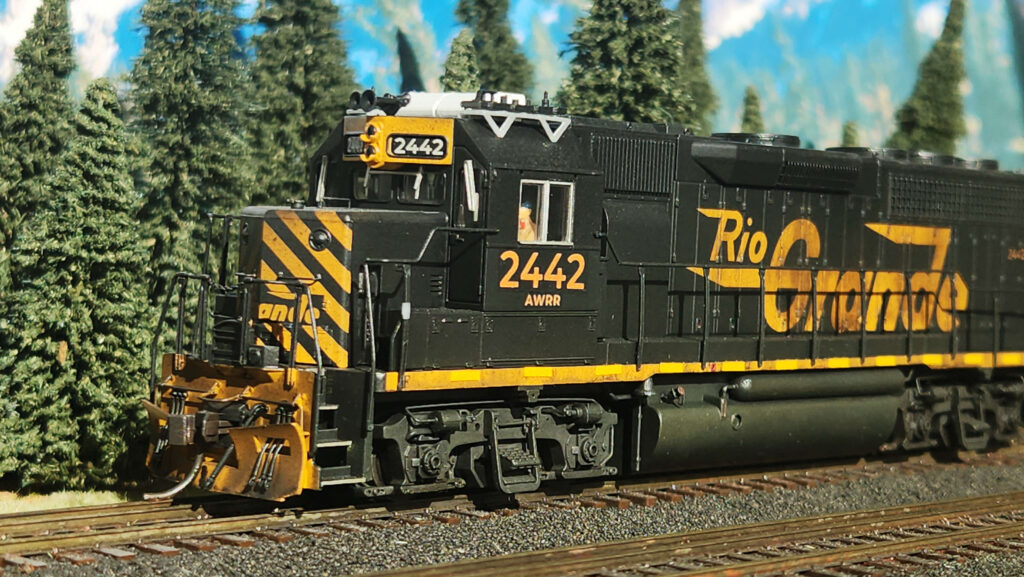
These locomotives formed the operational backbone of the Arvada Western Railroad, tirelessly hauling a wide range of essential commodities along the Golden Subdivision between Georgetown and Denver. Unit consists regularly moved heavy coal trains from the mountain mines, delivered crushed aggregate vital for construction and infrastructure projects, and transported Colorado’s famed beer from coors to markets beyond. In addition, they handled general merchandise and interchange freight, making them indispensable to the railroad’s early success. This proven versatility and dependability soon led the Arvada Western to begin seeking additional locomotives to strengthen and expand its growing roster.
2447, 2448
The arrival of the next two units marked a significant chapter in the evolution of the Arvada Western Railroad, introducing official railroad branding and a cohesive visual identity. Delivered in the early Phase 1 paint scheme, these GP40-2 locomotives were instrumental in supporting the railroad’s expanding footprint, particularly through their deployment at the Tennyson Street Yard. This period coincided with growth of the Kountry Subdivision, reflecting the railroad’s broader ambitions. Of particular note was unit 2447, which diverged from standard modernization practices of the era by receiving Remote Control Operation (RCO) upgrades in lieu of Positive Train Control (PTC), highlighting a unique operational choice in the context of contemporary industry trends to support yard operations.

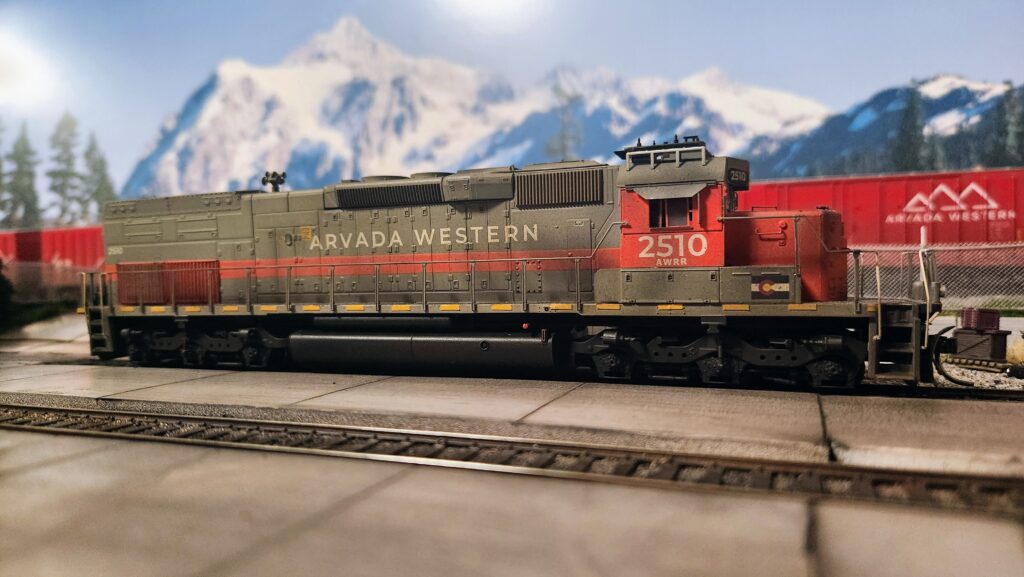
2510, 2511
In a move reminiscent of the legendary Denver & Rio Grande Western, the Arvada Western took a significant step forward by acquiring its first six-axle locomotives—SD40T-2s purchased from PotashCorp. These “tunnel motors” were brought in to begin phasing out leased road power that had been relied upon for the demanding unit trains operating out of the mountains. Units 2510 and 2511 were swiftly renumbered, lettered for Arvada Western, and equipped with Positive Train Control (PTC), enabling them to enter service with minimal delay. In time, 2511 was selected for a comprehensive overhaul, emerging not only mechanically refreshed but also adorned in the railroad’s updated Phase 2 paint scheme—marking a new era in the Arvada Western’s locomotive fleet.
2921, 2922, 2924
THE SD90MACs
A huge opportunity came for the Arvada Western Railroad as the Indiana Railroad began to remove their SD90/43MACs from their roster in the early 2020s.
As sucessfull as the SD40T-2s were for the Arvada Western, the railroad was still looking for more equiped power to handle the coal trains down from Georgetown and the longer thru trains on the Kountry Subdivision down south from the Tennesse Pass.
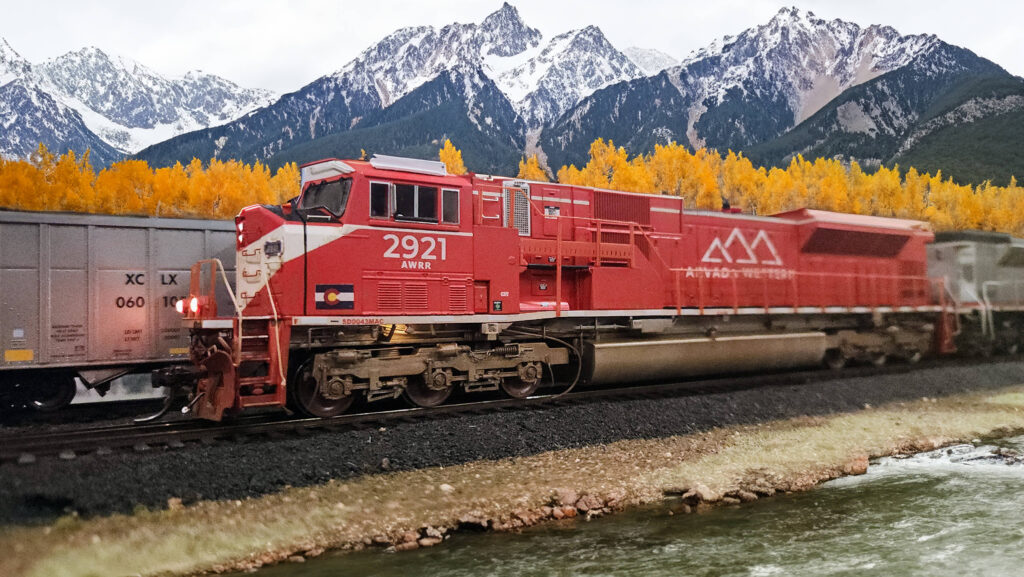
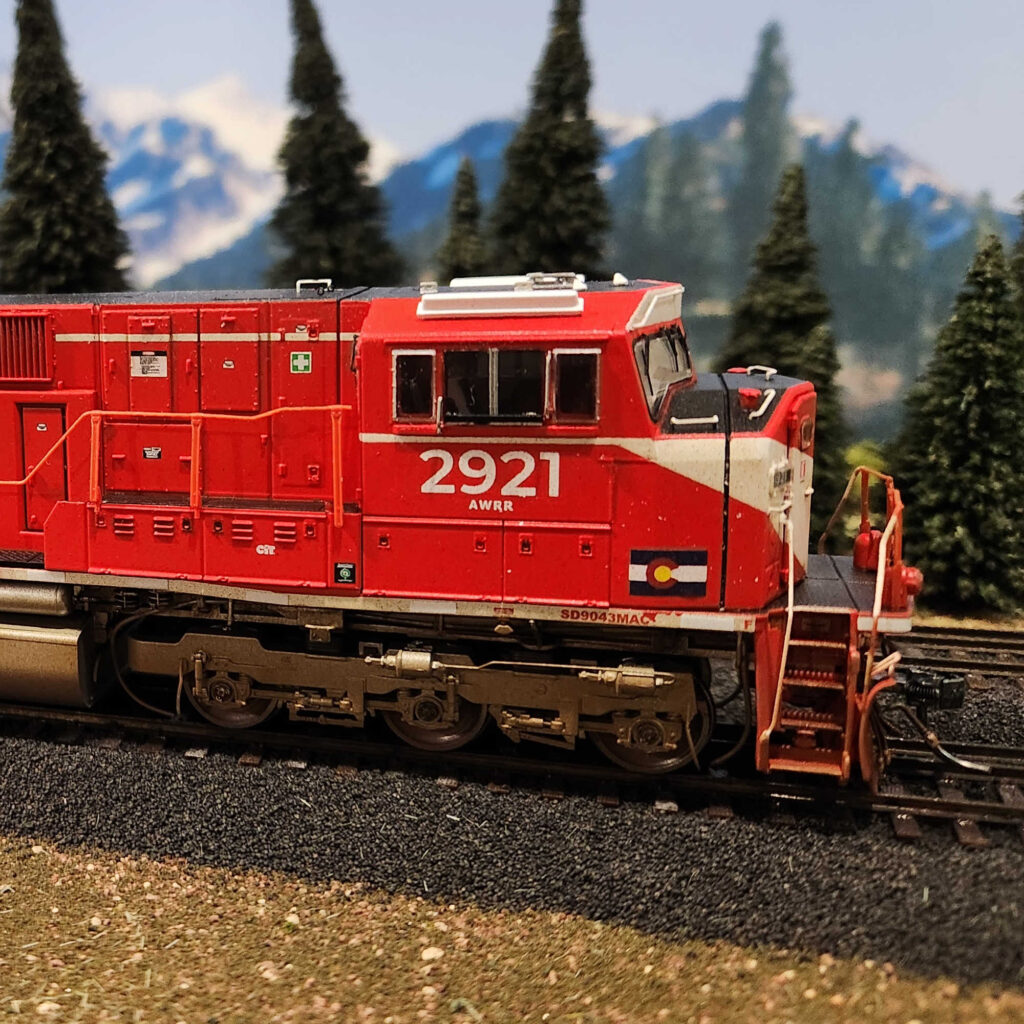
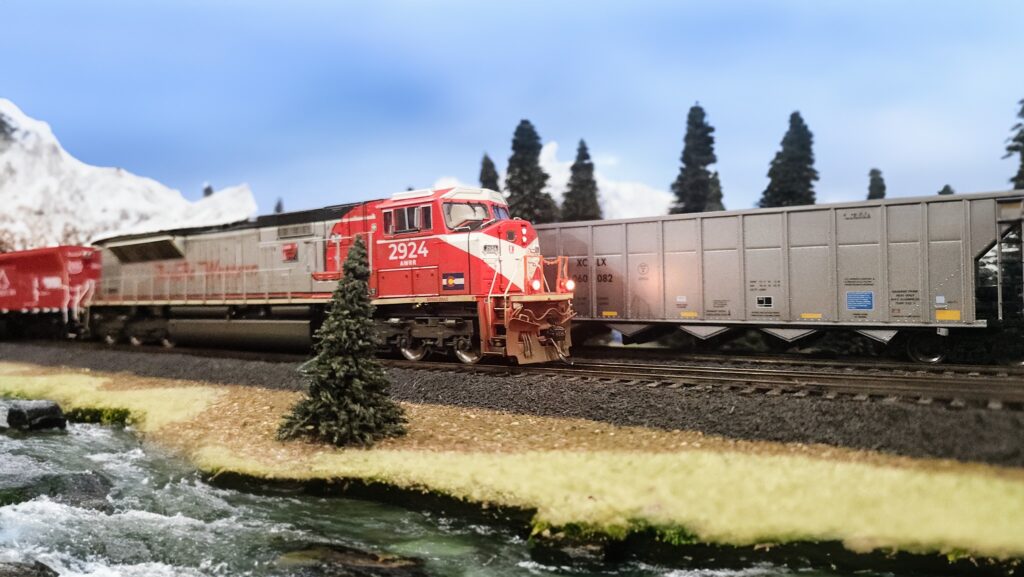
The SD90/43MACs was met with both sucess and some failure. Originally purchased for the coal trains from Georgetown, the tighter curves through Clear Creek Canyon between South Fork and Golden were difficult for these longer units to navigate through.
The majority of Arvada Western’s SD90/43MACs were moved to exclusive service along the Kountry Subdivision to haul trains between Buena Vista and Arvada/Denver. However, with the introduction of the SD90/43MACs, the Arvada Western were able to phase out all leased units on its roster.
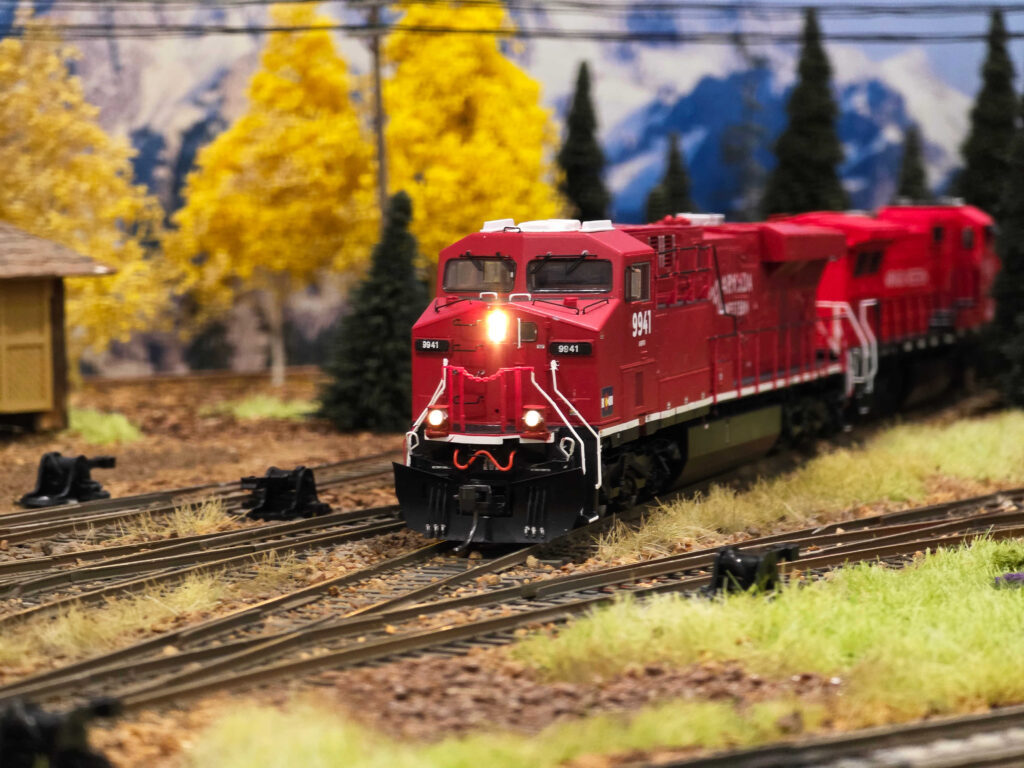
9940, 9941
Until the introduction of the ES44AC, the Arvada Western Railroad’s roster was composed entirely of EMD-built locomotives—a legacy that echoed back to the early days of North American dieselization. However, as traffic demands grew, particularly on long-haul coal trains over steep grades and winding mountain trackage, the railroad sought to evaluate newer, more powerful alternatives.
To that end, an ES44DC—part of GE’s Evolution Series—was brought in for testing on the Golden Subdivision. Rated at 4,400 horsepower and equipped with a GEVO-12 Tier 2 compliant prime mover, the locomotive delivered strong performance in fuel efficiency, tractive effort, and emissions standards. Train crews noted improved pulling power on grades and smoother ride characteristics, while maintenance-of-way personnel appreciated the reduced track wear compared to larger six-axle EMD.
The success of the test run led to the Arvada Western’s strategic decision to begin acquiring ES44AC units. With their AC traction motors, higher adhesion rates, and robust performance in heavy haul service, these locomotives became ideal power for coal drags moving out of the Rockies. Their addition marked a turning point in the modernization of the Arvada Western fleet, signaling a transition to a more balanced and technologically advanced motive power strategy.

9840, 9841, 9842
Buoyed by the success of the ES44AC fleet, the Arvada Western seized the opportunity to further diversify its motive power by acquiring one of General Electric’s most powerful four-axle locomotives—the Dash 8-40BW. These distinctive units, featuring wide-nose safety cabs, offered enhanced crew comfort while delivering a significant operational advantage: reduced track wear compared to their six-axle counterparts, particularly on lighter rail and in yard or regional service.
All acquired units underwent comprehensive refurbishment through Sur Rail’s modernization program, emerging as upgraded Dash 8-40BWRs. Among them, unit 9840 stood out as the first to receive the Arvada Western’s updated Phase 2 paint scheme. Its unveiling marked not only the integration of modernized motive power but also a renewed commitment to consistent branding—aligning the railroad’s image with its partners and peers in the broader Sur Rail network. This move signaled a new era of professionalism, interoperability, and visual identity for the Arvada Western Railroad.
